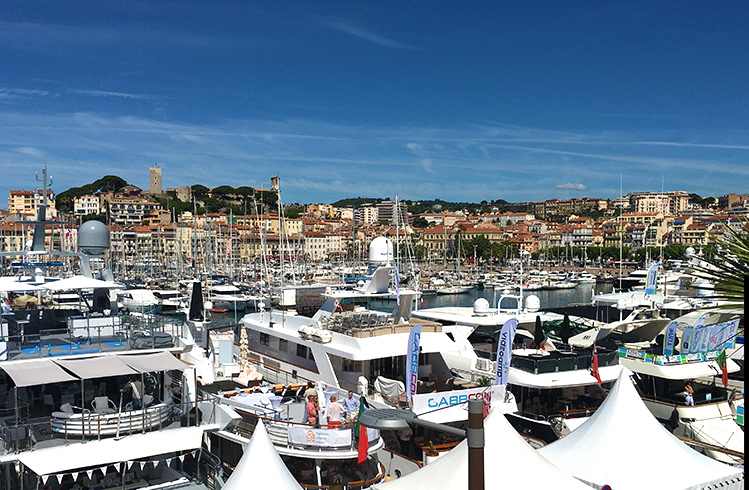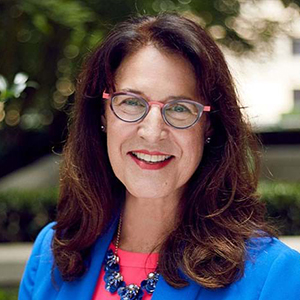

Cannes Lions 2019 Through Fresh Eyes
It’s that time of year again: time to head to France for the Cannes Lions International Festival of Creativity. This year, I’m even more excited for the trip than I usually am (which is really saying something!) For one thing, one of the festival’s key themes is “The New Rules on Brand Purpose” — which is, of course, core to our work at WE Communications. It will be great to dive into how this discussion takes shape, and this year I’ve invited three 20-something communications students to join me — all of whom are deeply committed to brand purpose. I figure we can all learn a lot when we look at brand purpose through the eyes of the people who will shape it tomorrow.
My travel companions are:
- Tech, travel, and fashion enthusiast Melvin Ong, age 25. Melvin was born in Singapore and studies Information Systems and Communications at Singapore Management University.
- Andreea Adascalitei, age 22, originally from Boto?ani, Romania. Andreea is studying for her master’s degree in Advertising, Branding and Communication at the University of West London.
- Kanhaiya “Kan” Maheshwary, age 27, hails from Mumbai, India, and has an MBA from NMIMS in Mumbai. Kan is currently pursuing his Master of Communication in Digital Media at the University of Washington in Seattle. He’s been following the Cannes Lions submissions for years as a student, so in his words, experiencing the festival firsthand is “a dream come true!”
In preparation for our trip, I asked our students to define purpose as they see it; explain how they distinguish purpose from what I call “purpose washing”; and offer advice to brands bringing their purpose to life — now and in the future.
What’s the purpose of purpose?
Andreea answered this question with one word: connection. For one thing, she said, purpose is a connection to ourselves and our value systems: “Purpose should relate to our inner purpose.” It also pushes us to figure out what we really care about — and act on it. This, in turn, connects us with the brands, and people, whose values we share.
“Purpose shows that a brand is thinking of a larger goal and is committed to making the world a better place,” Kan added. “We have innumerable crises at hand ranging from food instability to poor air quality. Brands can be powerful agents of change, because they have both the financial clout and the visibility to convey a bigger social message.”
Melvin put it simply. “Brands should always ask themselves WHY,” he said. “Why do they exist?” (The word why happens to be one of my favorite words, but I digress.) That’s another way of framing the question I always put to team members, clients, and myself at each stage of a project or campaign: “To what end?” I’ve found if we can explain why we’re doing something, the map to our destination is easy to draw.
Purpose makers or purpose fakers?
What is the difference between purpose and spin — and how can we tell? According to new global research WE conducted in partnership with Quartz Insights, 84% of our respondents told us consumers will demand greater transparency and assurance that the brands they support have a positive impact on society. Discernment is one of the most important tools in any communicator’s toolbox, so I asked Andreea, Melvin, and Kan how they know when something passes the sniff test.
Andreea pointed out that 21st-century consumers are a lot savvier than they used to be. “Maybe 20 years ago, people believed what brands told them at face value, but nowadays people are looking for evidence that brands are making an impact.”
“I can tell a brand is a purpose faker if [it] doesn’t do what it says,” Melvin told me. He cited several examples of purpose-washing to make the point that brands aren’t fooling anyone. “The word spreads,” he added.
To Kan, it comes down to sustainability. “A brand that’s truly committed to a purpose has a better chance to endure the long term," he said. “If it’s just riding on a viral moment and doesn’t follow up on its actions once a movement dies, we know it was just trying to cash in on a trend.”
Advice for the future, from the future
Last but not least, I asked Andreea, Melvin, and Kan if they have any pre-Cannes words of advice for brands that want to lead with purpose — or for me, the Global CEO and founder of a purpose-driven company.
For Andreea, the key is that brands bring their purpose to life by directly engaging their customers. “Words can be forgotten very quickly,” she said, “but when people are involved in sharing a brand’s purpose, they will remain connected and will share their experiences with others.”
“Alignment of a purpose-driven message is most important,” Melvin added. “Communicating a brand’s purpose through its mission and vision is important, but it has to manifest in the brand’s product and services as well. Ultimately a powerful message of the company purpose can be reflected when all areas are aligned.”
Kan’s advice: Stay vigilant. In other words, as he put it: “Only work with clients who have a clean history free from scandals and controversies that have been detrimental to society.”
I’ve made that promise and plan on keeping it — and I’m glad these future communications leaders will hold me to my word. In fact, I’m glad for these future communications leaders, full stop, and I’m especially glad they’ll be traveling with me to Cannes. Stay tuned for their insights on the other side!
For conversations between Melissa and other students, read her post "Lessons from the Future: Listen Up!" on what she learned from USC's graduate students.
For more on the changing face of Cannes, read her post "The New Creativity at Cannes Lions: A Festival In Motion."
The latest blogs from WE
Decoding Gen Alpha: A Primer on the Next Gen of Consumers
Why Gen Alpha Will Fuel Spending This Season
Why Reputation Is a Business Driver in Healthcare


